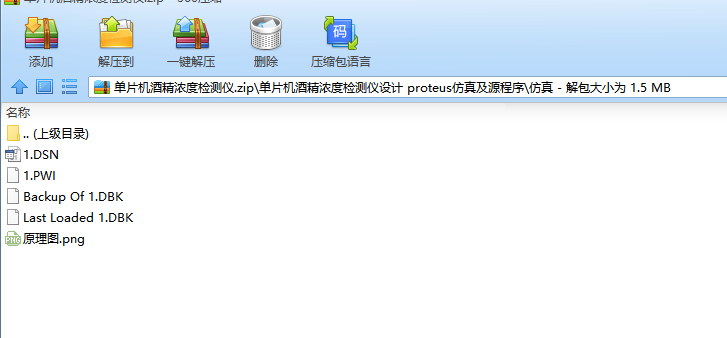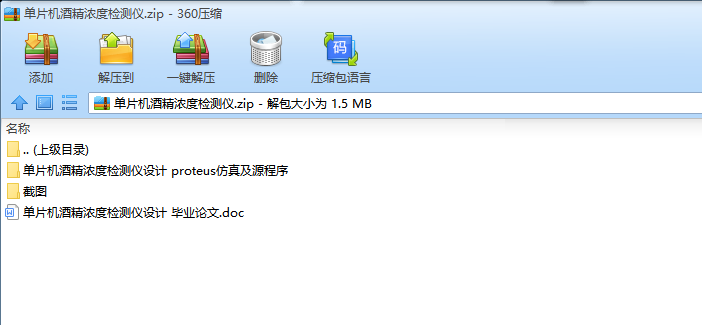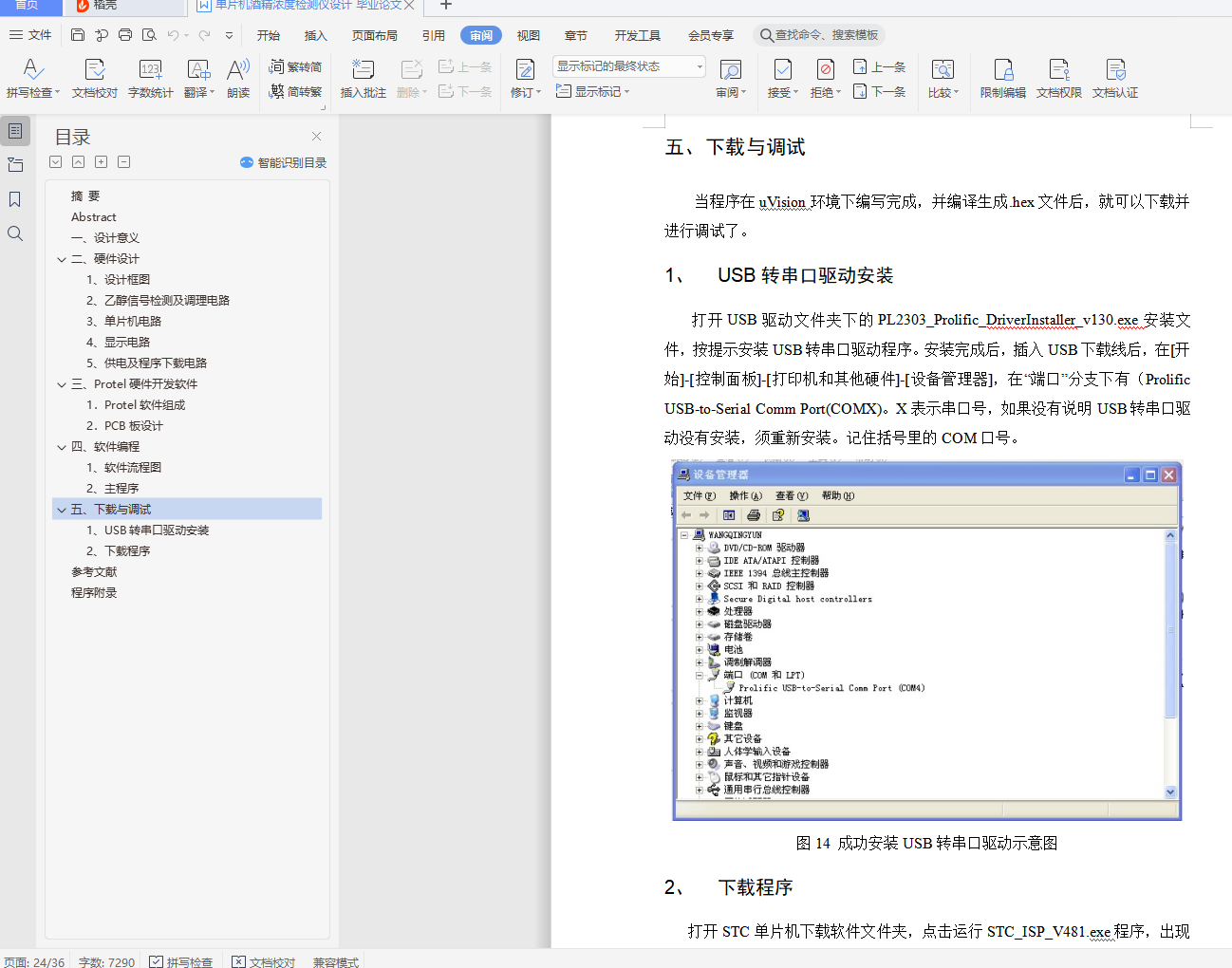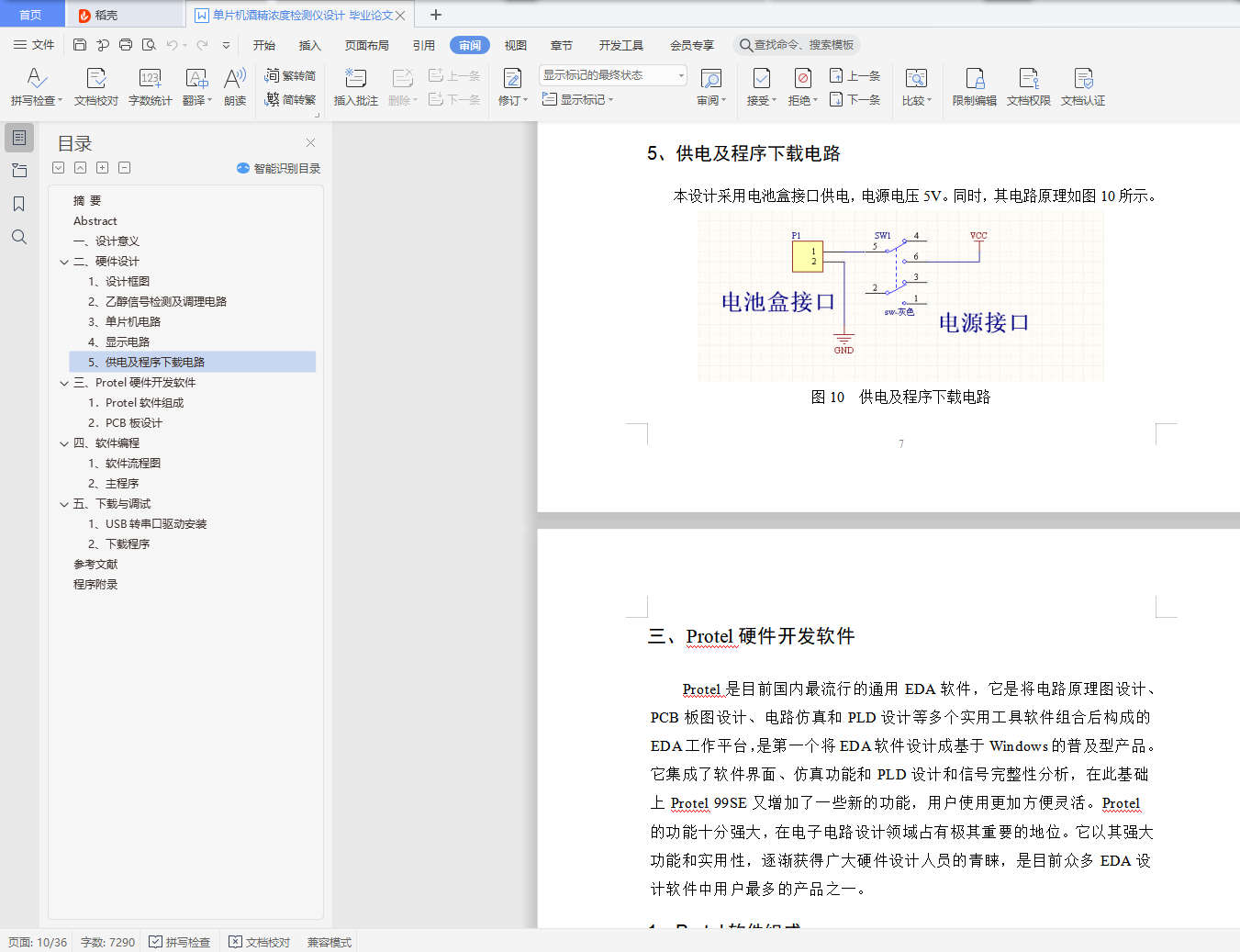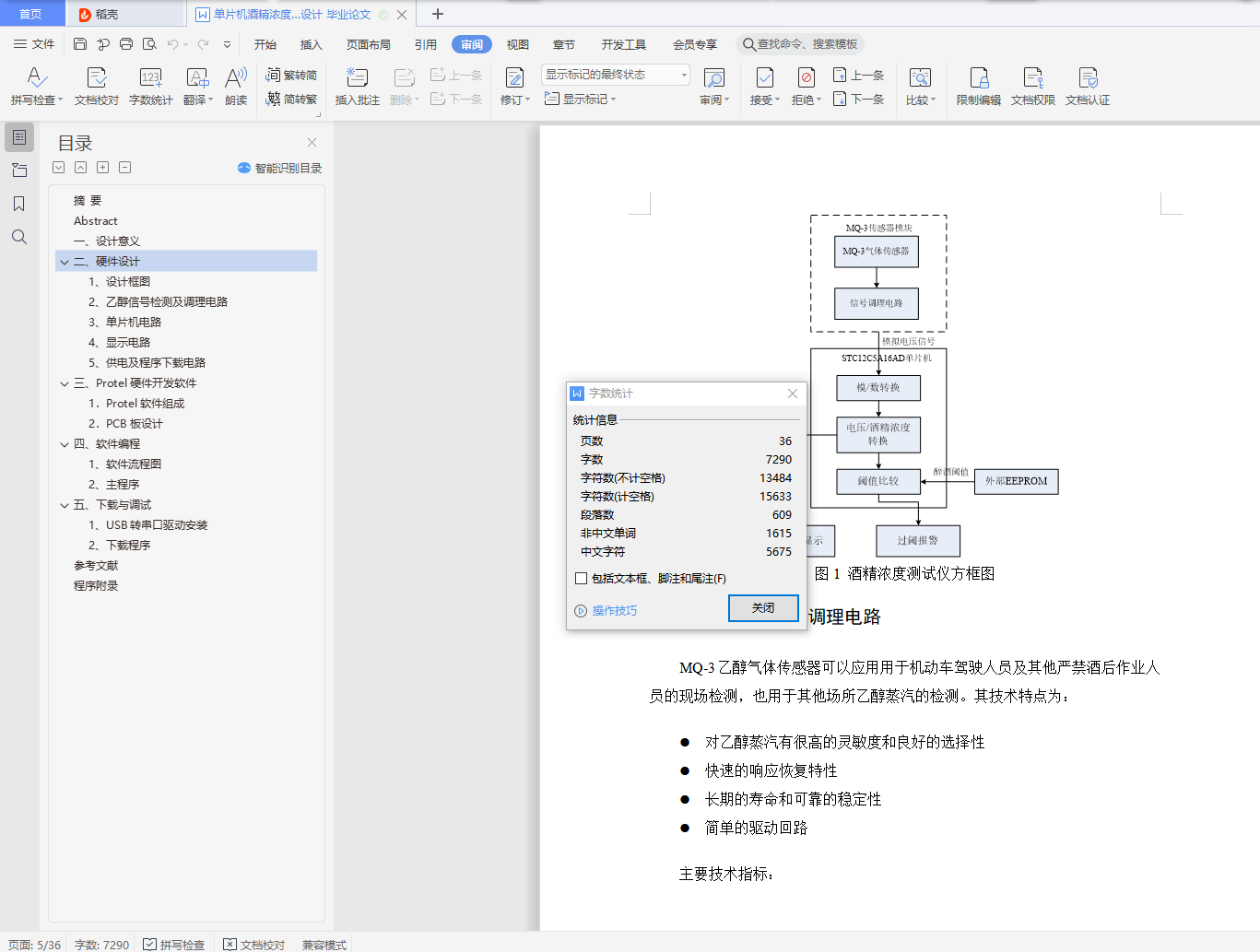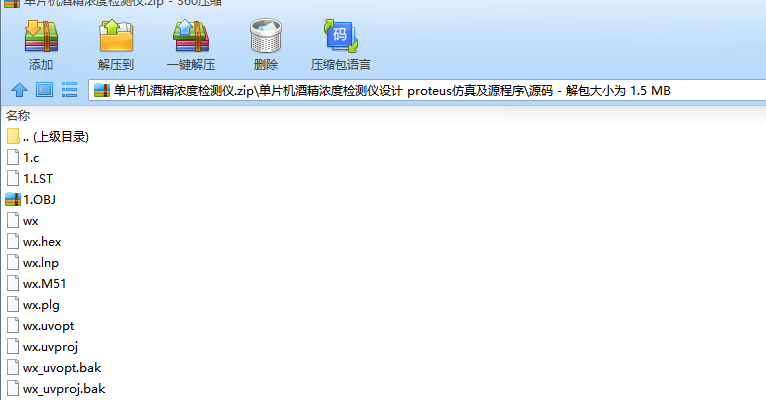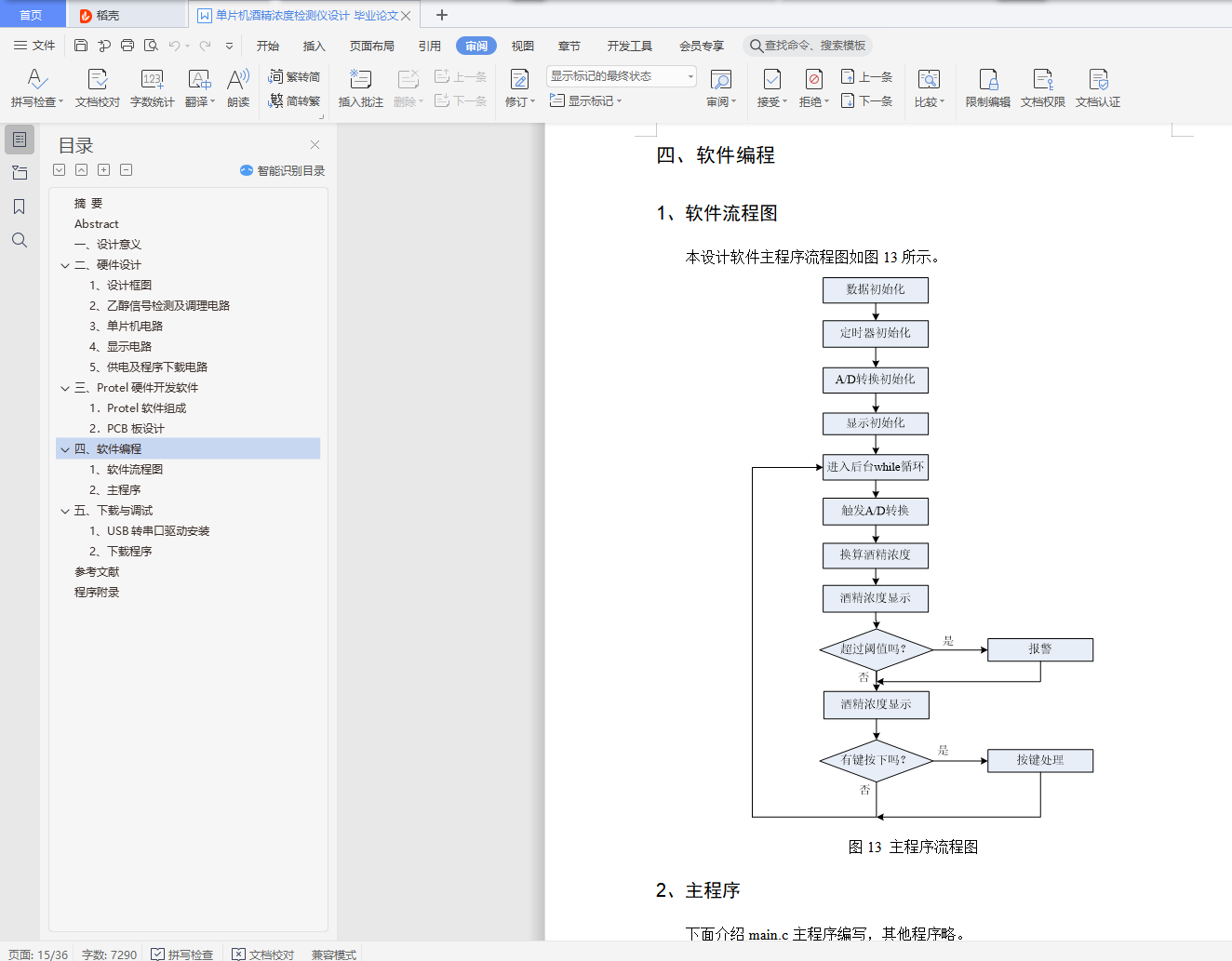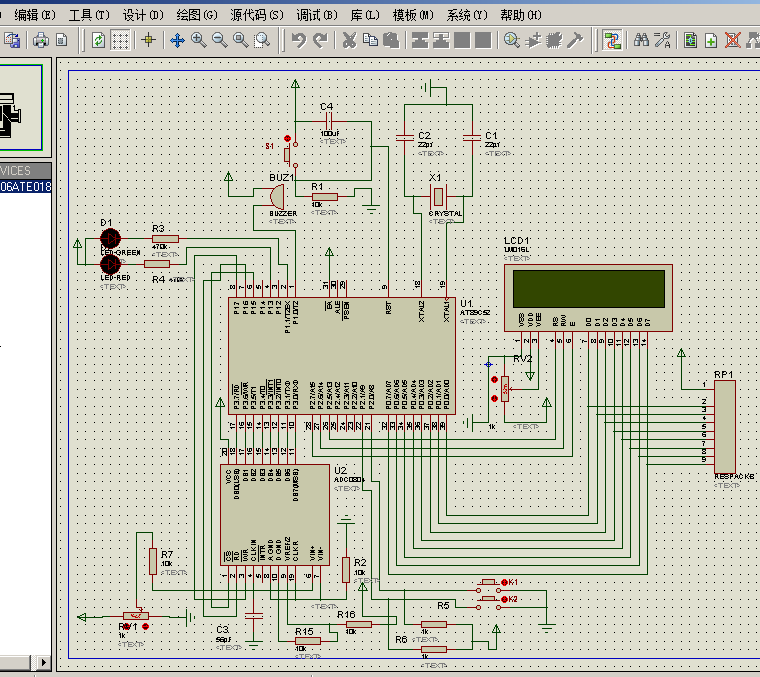摘 要
随着经济的腾飞,社会也在日新月异的发展,人们的生活水平和娱乐方式在发生着改变,其中许多娱乐活动都离不开酒,但是这也引发了许多问题.导致交通事故的重要原因之一就是酒后驾车,交警在执法现场可以通过检测司机呼出气体中酒精气体浓度来判断是否有酒驾嫌疑.酒精浓度探测仪日益受到重视,使用范围也逐渐扩大,例如在一些需要控制空气中酒精气体浓度的场所,可以使用它来对气体监测.随着物质生活的极大丰富,酒精浓度探测仪也会有更好的应用前景。
本文利用MQ-3酒精浓度传感器能很好的解决该问题.MQ-3乙醇气体传感器以驾驶员呼出的气体为采集对象,输出随乙醇浓度变化的电压信号,该电压信号经ADC0832转换,送入STC89C52单片机系统,通过AT24C02与设定的醉酒阈值进行比较,并在LCD1602液晶上显示酒精浓度值,当酒精浓度超过设定值时,通过单片机驱动蜂鸣器进行报警.从而为交警检测驾驶员是否酒后驾车提供了可靠的依据。
关键词:酒驾;酒精;检测;检测仪;STC89C52
Abstract
With the rapid development of economy and the rapid development of society, people's living standard and entertainment mode are changing, many of which can not be separated from wine, but this also causes many problems. One of the important causes of traffic accidents is drunk driving. Traffic police can judge whether there is suspicion of drunk driving by detecting the concentration of alcohol gas in the exhaled gas of the driver at the law enforcement scene. The alcohol concentration detector has been paid more and more attention, and the scope of use has been gradually expanded, for example, in some places where the concentration of alcohol in the air needs to be controlled, it can be used to monitor the gas. With the great enrichment of material life, alcohol concentration detector will have a better application prospect.
MQ-3 alcohol concentration sensor can solve this problem well. MQ-3 ethanol gas sensor takes the gas exhaled by the driver as the acquisition object and outputs the voltage signal varying with the ethanol concentration. The voltage signal is converted into the STC89C52 single-chip microcomputer system by ADC0832, and the alcohol concentration value is displayed on the LCD1602 liquid crystal. Thus, it provides a reliable basis for traffic police to detect whether drivers drink and drive.
Keywords: drunk driving; alcohol; testing; detector; STC89C52
目 录
摘 要 I
Abstract II
一、 设计意义 1
二、 硬件设计 1
1、设计框图 1
2、乙醇信号检测及调理电路 2
3、单片机电路 5
4、显示电路 6
5、供电及程序下载电路 7
三、 Protel硬件开发软件 8
1.Protel软件组成 8
2.PCB板设计 9
四、 软件编程 12
1、软件流程图 12
2、主程序 12
五、 下载与调试 21
1、 USB转串口驱动安装 21
2、 下载程序 21
参考文献 24
程序附录 25
